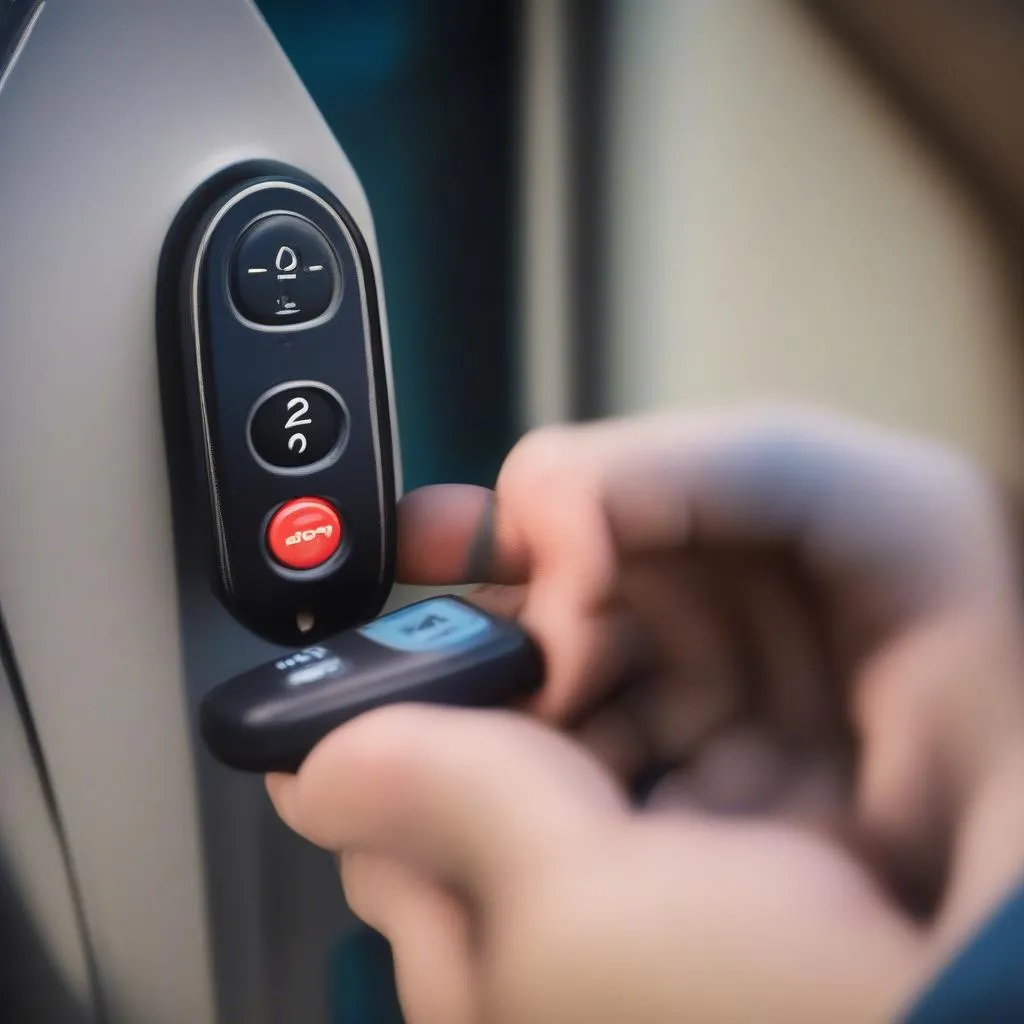A “mini brake warning” light appearing on your dashboard can be a nerve-wracking experience. It usually signals an issue with your car’s braking system, demanding immediate attention. While it could point to a minor problem, ignoring it could jeopardize your safety and lead to costlier repairs down the line. This comprehensive guide will delve into the common causes of a mini brake warning, how to diagnose the issue, and potential solutions.
Understanding Your Car’s Braking System
Before we jump into the specifics of a mini brake warning, it’s helpful to understand the basics of how your car’s braking system works. Modern vehicles typically utilize a hydraulic system, where pressing the brake pedal applies pressure to brake fluid. This pressure activates the calipers, pushing the brake pads against the rotors to slow down or stop the car.
Common Causes of a Mini Brake Warning Light
A mini brake warning light can be triggered by several factors, ranging from simple issues to more complex problems:
- Worn Brake Pads: This is the most common culprit behind the warning light. As brake pads wear down over time, a sensor within the brake system detects the thinness and illuminates the warning light.
- Low Brake Fluid: Brake fluid is the lifeblood of your braking system. If the fluid level is low, it can indicate a leak in the system, potentially leading to reduced braking performance.
- Faulty Brake Light Switch: The brake light switch is responsible for activating your brake lights when you press the pedal. If this switch malfunctions, it can also trigger the brake warning light.
- ABS Issues: While less common, problems with the Anti-lock Braking System (ABS), such as a faulty sensor or control module, can also illuminate the brake warning light.
- Parking Brake Engaged: Sometimes, the simplest explanation is the most likely one. If the parking brake is not fully released, it can trigger the warning light.
Diagnosing a Mini Brake Warning Light
Identifying the root cause of the warning light requires a systematic approach:
- Check Your Parking Brake: Ensure the parking brake is fully disengaged.
- Inspect Brake Fluid Level: Locate the brake fluid reservoir under the hood and check the fluid level. It should be between the “Min” and “Max” marks.
- Visual Inspection: Examine your brake pads and rotors for signs of wear and tear. Look for excessively thin pads, deep grooves, or cracks in the rotors.
When to Seek Professional Help
If the above checks don’t reveal the issue or you’re uncomfortable performing them yourself, seeking professional help is crucial. A qualified mechanic can diagnose the problem accurately using advanced diagnostic tools and recommend the appropriate course of action.
Mini Brake Warning Light: Can You Still Drive?
While the severity of the problem determines whether you can still drive, it’s best to err on the side of caution. If the warning light is accompanied by other symptoms like a soft brake pedal, unusual noises when braking, or pulling to one side, it’s best to stop driving immediately and have your car towed to a mechanic.
Resetting the Mini Brake Warning Light
Once you’ve addressed the underlying issue, the brake warning light should go off on its own. In some cases, you might need to reset the light manually. The process may vary depending on the car model, but it usually involves disconnecting the battery for a short period or using a diagnostic tool.
Preventative Maintenance for Your Braking System
Regular maintenance is key to preventing brake problems and ensuring your safety on the road:
- Regular Brake Inspections: Have your brakes inspected by a qualified mechanic at least once a year or as recommended in your car’s owner’s manual.
- Timely Brake Pad Replacement: Replace your brake pads as soon as they reach the minimum thickness specified by the manufacturer.
- Brake Fluid Flush: Flush and replace your brake fluid every 2-3 years or as recommended by the manufacturer to maintain optimal braking performance.
Conclusion
A mini brake warning light is a serious signal that should never be ignored. By understanding the common causes, knowing how to diagnose the problem, and prioritizing preventative maintenance, you can ensure the longevity and reliability of your braking system and, most importantly, your safety on the road. Remember, when it comes to brakes, it’s always better to be safe than sorry.
Frequently Asked Questions
1. Can I reset the mini brake warning light myself?
While it’s possible to reset the light yourself, it’s recommended to have a qualified mechanic diagnose the underlying problem and reset the light to ensure it’s been addressed correctly.
2. How much does it cost to fix a mini brake warning light?
The repair cost depends on the underlying issue. A simple brake pad replacement can cost a few hundred dollars, while more complex issues like ABS module replacement can cost significantly more.
3. How long can you drive with the mini brake warning light on?
It’s not advisable to drive with the warning light on. The severity of the problem determines how long you can drive, but it’s best to stop driving and seek professional help as soon as possible.
4. Is it safe to drive my Mini Cooper if the brake warning light is on?
Driving with the brake warning light on is unsafe and can put you and other road users at risk. Have your car inspected and repaired by a qualified mechanic immediately.
5. Can a low battery cause the mini brake warning light to come on?
While a low battery can cause various electrical issues in your car, it’s unlikely to directly cause the brake warning light to come on. However, it’s best to address any battery issues promptly.

